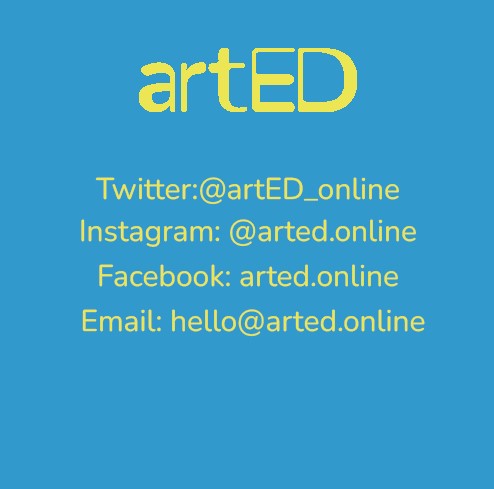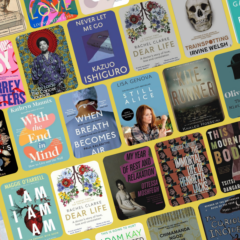Our very own member of staff, Helen Shaddock, has donated her recent publication, The Thing Part 1, to the Medicine in Literature Collection.
Published as a limited edition by artizine, The Thing, is a collection of the artist’s poetry and prose— poignant, candid and humorous reflections on her experience of living with eating distress, OCD, and autism.
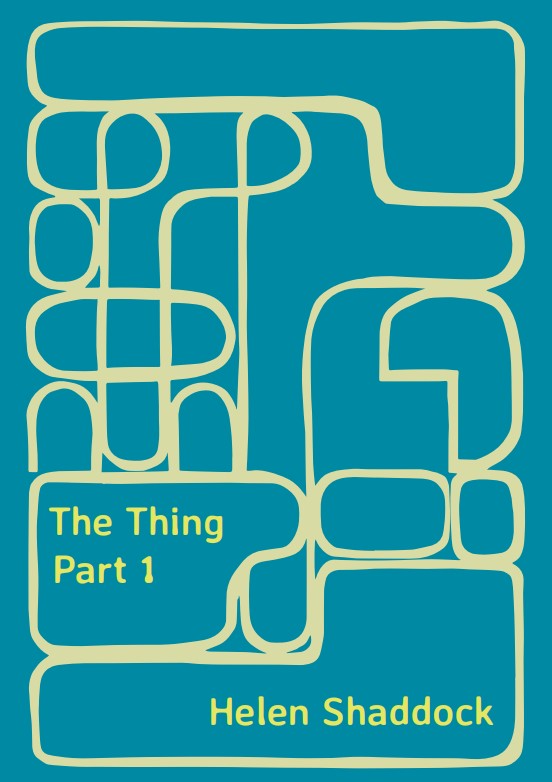
Helen invites us into her world. Revealing with straight talking honesty and humour the things that make her tick and the systems that she creates to get her through each day.
We asked Helen to give us an insight into her writing process and creating the publication:
During the pandemic I began doing a daily diary covering topics such as activities (things I’d done during the day), podcasts and audiobooks I’d listened to, my song of the day, films I’d watched and so on.
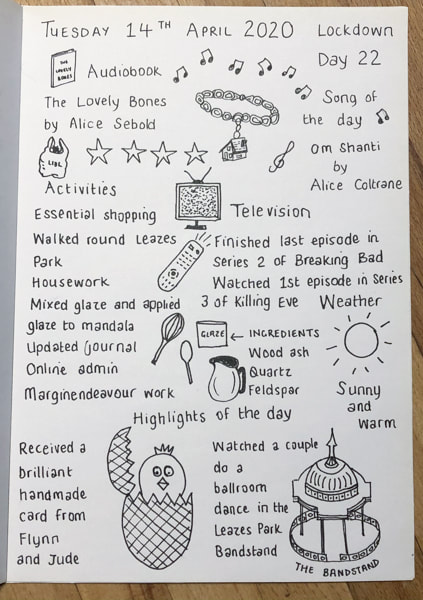
The daily diaries were a good place to write briefly about any reflections or thoughts, but I increasingly found I wanted somewhere to write longer pieces. This is when I began writing ‘The Thing’. I used writing as a means of processing my feelings and it helped to get my thoughts and experiences on the page. When the lockdowns ended I wrote less frequently, but over the past year I have had an urge to write more again. The Thing includes a mixture of some of the writing that I revisited from the pandemic and newer material written over the past year.
How did you decide on the order of the texts within the publication?
I was conscious of wanting to set a scene at the beginning, so the first one that I chose gives some context and provides the reader with a kind of introduction. My hope is that after this, when they read the more abstract pieces, they have a bit of a better understanding of where those are coming from. I also wanted to vary the tone throughout the publication. Some of the texts are really quite heavy. Some of them are lighter in tone. So when structuring the publication I tried to create a journey so the reader moves through the texts with ease, and I dispersed the heavy texts throughout. The same is for the length of the texts. For instance, a longer text would be followed by a shorter text.
Can you tell us about your use of colour in the publication.
I use colour as a way of luring the audience in. Some of the topics of conversation within the publication are hard hitting, they’re honest, they’re not particularly easy topics to discuss, and therefore I kind of wonder whether it needs to be cheered up a bit through the use of colour.
Please talk a little about your use of language and formatting.
I try and make the language as relatable as possible. Often the way that I write is a direct relation to how I think. Frantic Thoughts hardly changed at all in the editing. It’s almost like verbatim; the thoughts that I had at the time. I remember the day significantly; I just had to write, and pretty much wrote it as it exists now. Whereas some of the other pieces that I started right at the beginning of the pandemic have gone through a lot more editing and have morphed and changed. I have tried to use the formatting of the text to emphasise the tone of the writing. For example, Frantic Thoughts is a block of justified text consisting of short sentences. This is because my thoughts were very punchy. Abrupt. To the point. With no space for consideration. Overwhelming. A mass of information.
The Thing is now available to buy from arted.online in a limited edition of 250. Each publication is signed and numbered by the artist.
artED is a digital space exploring eating distress through art practice. artED evolved out of the graphic-art diaries that Helen began making at the start of the pandemic to stay connected to family and friends. With an archive of over 1800 (and counting!) artED is born out of Helen’s interest to explore the contents of the diaries and show how she makes sense of the world through her art.
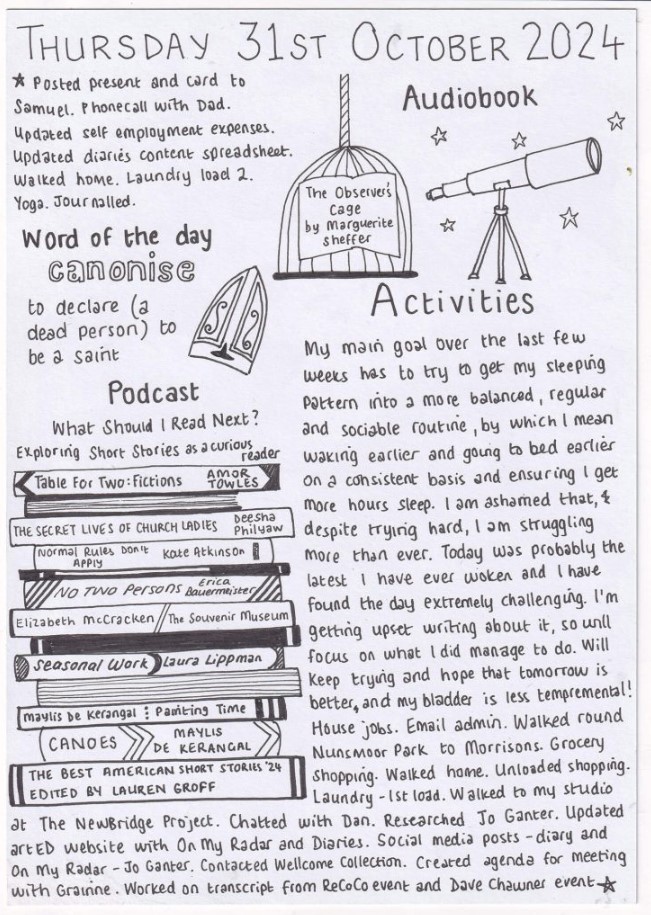
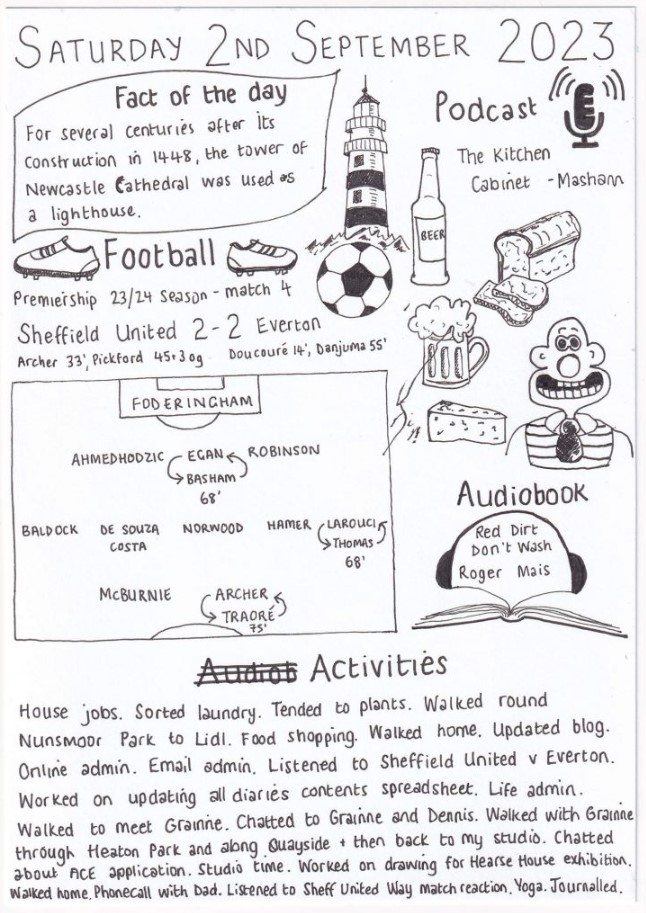
“Recording my daily activities kept me stimulated and motivated to take a walk, watch a film, listen to a podcast, or make a drawing. I got into the habit of posting the diaries every day on social media and my confidence grew as more and more people connected with them. Gradually, as time went on, they became a way for me to share my experience of living with eating distress, OCD and autism. I hope that by being open about my experiences I can support others in similar situations and raise understanding of neurodiversity and eating distress.”
Helen Shaddock
You can follow artED on twitter, instagram and facebook, and if you have any questions or comments you can email her.
Twitter: @artED_online
Instagram: @arted.online
Facebook: arted.online
Email: hello@arted.online
